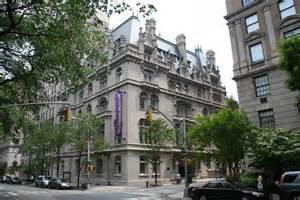May 5 2017 - Sep 24 2017
New York City, NY
The artist Florine Stettheimer (1871–1944) is an icon of Jazz Age New York. Born to a wealthy Jewish family in Rochester, she studied at the Art Students League in New York City and then in Europe, where she encountered two profound influences: the Symbolist painters and poets and, on the eve of the Great War, the Ballets Russes. Returning to Manhattan, she hosted an elite salon together with her sisters Carrie and Ettie and their mother, Rosetta, attracting many of the leading lights of the artistic vanguard. Her circle included Alfred Stieglitz, Carl Van Vechten, Georgia O’Keeffe, Elie Nadelman, Gaston Lachaise, and many others. Among her intimate friends was Marcel Duchamp.
Through over 50 paintings and drawings, a selection of costume and theater designs, photographs and ephemera, as well as critically acclaimed poems, the Jewish Museum will offer a timely reconsideration of this important American artist, revealing Stettheimer's singular and often satiric vision and significant role in American modern art. The exhibition highlights the artist's distinctly personal style of painting, Stettheimer's position amidst New York's artistic elite and avant-gardes, and her continued influence on artistic practice today.
Credit: Exhibition overview from museum website.
Whether you go or not, the companion catalogue, Florine Stettheimer: Painting Poetry, offers a new look at the art of one of the most charming and idiosyncratic personalities of early 20th-century New York. Beautifully illustrated with 150 color images, including the majority of the artist’s extant paintings, as well as drawings, theater designs, and ephemera, this volume also highlights Stettheimer’s poetry and gives her a long overdue critical reassessment. The essays published here—as well as a roundtable discussion by seven leading contemporary female artists—overturn the traditional perception of Stettheimer as an artist of mere novelties. Her work is linked not only to American modernism and the New York bohemian scene before World War II but also to a range of art practices active today. Flamboyant and epicurean, she was an astute documenter of New York and parodist of her social milieu; her highly decorative scenes borrowed from Surrealism and contributed to the beginnings of a feminist aesthetic.
Exhibition Venues & Dates
May 5 2017 - Sep 24 2017
New York City, NY

